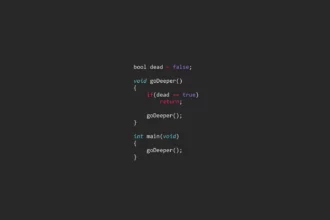Understanding LLM Hallucination: Definition and Implications
Hallucination in Large Language Models (LLMs) like ChatGPT can be quite perplexing. Imagine asking for a recipe for chocolate cake and receiving directions for building a spaceship instead! This kind of inaccurate, nonsensical, or detached text generation is what we refer to as hallucination in the realm of LLMs. In the rapidly evolving landscape of artificial intelligence, where LLMs play a pivotal role in text generation, addressing hallucination becomes paramount to uphold the reliability and trustworthiness of AI systems.
So, let’s delve into the intricacies of LLM hallucination, starting with its definition and implications. Picture this: you’re exploring cutting-edge Generative AI solutions like ChatGPT that have revolutionized interactions with AI-powered systems across various industries. However, amidst all these advancements lies a lingering concern – Hallucination. This issue arises when LLMs produce text that is erroneous, nonsensical, or detached from reality. According to surveys, worries about the dissemination of inaccurate information online are rife among users due to hallucinations within LLM-generated content.
Now, let’s uncover why hallucinations occur in LLMs: The causes range from source-reference divergence in training data to exploiting vulnerabilities through jailbreak prompts. The reliance on incomplete datasets and overfitting also contribute significantly to hallucinatory outputs. Understanding these underlying reasons is crucial for mitigating hallucination risks and ensuring the credibility of LLM-generated content.
Did you know that addressing hallucination challenges in LLMs is essential for sectors like finance, healthcare, and marketing as they increasingly rely on AI-driven platforms? Stay tuned as we explore different types of hallucinations in LLMs next and discuss the consequences – both ethically and practically – of dealing with these phenomena given recent advancements until 08/June/2024! Excited to uncover more about this fascinating journey? Let’s continue exploring further sections!
Table of Contents
ToggleWhat Causes Hallucination in Large Language Models?
Hallucination in Large Language Models (LLMs) can stem from various factors, leading to responses that deviate from reality. One primary cause is the model’s limited contextual understanding and the noise or errors present in the training data, which can result in generating incorrect, nonsensical, or inconsistent text. This issue arises due to source-reference divergence in the training data, exploitation of vulnerabilities through jailbreak prompts, reliance on incomplete datasets, and overfitting. These factors contribute to hallucinatory outputs and underscore the importance of addressing them to enhance the credibility and trustworthiness of LLM-generated content.
Types and Consequences of Hallucination in LLMs
Types and Consequences of Hallucination in LLMs
Addressing the hallucination problem in Large Language Models (LLMs) is crucial to ensure the accuracy and reliability of generated text. By understanding the spectrum of hallucinations, we can effectively navigate the challenges associated with LLM-generated content. Categorizing these hallucinations provides valuable insights into how LLMs may deviate from expected outputs, allowing for targeted solutions to enhance Customer Experience (CX) and overall output quality.
Are Hallucinations Always Undesirable? Not all LLM hallucinations are undesirable. While many lead to inaccuracies and misinformation, some types of hallucinations may spark creativity or generate novel ideas. However, given the potential risks associated with misleading information, it is essential to address and differentiate between desirable and undesirable hallucinations.
What are the Different Types of Hallucinations? Hallucinations in LLMs can manifest in diverse forms, such as factual inaccuracies, inconsistent responses, off-topic outputs, or even contradictions within a single text generation. Understanding these variations is key to identifying patterns and implementing strategies to mitigate each type effectively.
Why Do LLMs Hallucinate? Various factors contribute to LLM hallucinations, including limitations in contextual understanding, noise in training data, source-reference divergence within datasets, vulnerabilities through jailbreak prompts, reliance on incomplete data sets, and overfitting issues during model training. These factors collectively influence the generation of erroneous or nonsensical text by LLMs.
What Are the Different Ways of Measuring Hallucinations? Measuring hallucinations in LLMs requires robust evaluation metrics that assess textual coherence, semantic consistency, factual correctness, and relevance to input prompts. These measurements enable researchers and developers to quantitatively analyze the extent of hallucination present within generated content.
How Can We Reduce LLM Hallucinations? Reducing LLM hallucinations involves refining training processes by incorporating high-quality datasets with diverse perspectives while implementing techniques like adversarial training to enhance model robustness against deviations from reality. Regular monitoring for signs of hallucination during inference stages can also aid in reducing unwanted outputs.
When Do LLMs Hallucinate The Most? LLMs are more prone to hallucinate when faced with ambiguous or out-of-context prompts that challenge their ability to provide coherent responses. Additionally, insufficient or biased training data can exacerbate occurrences of hallucination in text generation tasks using large language models. By developing a deeper understanding of these types of hallucinations and their implications on AI reliability and integrity when working closely with large language models like ChatGPT.
Strategies to Mitigate Hallucination in LLMs
To effectively mitigate hallucinations in Large Language Models (LLMs), it is crucial to implement robust strategies that address the root causes of inaccuracies and nonsensical outputs. These strategies aim to enhance the accuracy and reliability of the generated text, ultimately improving the overall performance of LLMs. Let’s explore some essential approaches to combating hallucinations in LLMs:
Preventing Hallucinations through Pre-Generation Strategies: Pre-generation strategies focus on averting the generation of erroneous or misleading information by LLMs from the outset. By incorporating these proactive measures, developers can reduce the likelihood of hallucinatory outputs. Some key pre-generation strategies include:
- Robust Training Data: Utilizing high-quality datasets with diverse perspectives can help improve the contextual understanding of LLMs, reducing the chances of hallucinations stemming from limited training data.
- Adversarial Training: Implementing adversarial training techniques can enhance model robustness against deviations from reality by exposing LLMs to challenging scenarios during training.
- Source-Reference Alignment: Ensuring alignment between source data and reference material used for training helps mitigate source-reference divergence issues, which contribute to hallucinatory responses in LLMs.
- Regular Model Evaluation: Conducting regular evaluations of LLM outputs during training can help identify early signs of potential hallucinations and allow for corrective measures before deployment.
Post-Generation Strategies for Hallucination Mitigation: Post-generation strategies come into play after text generation occurs, focusing on refining and validating generated outputs to ensure accuracy and coherence. These strategies aim to detect and correct hallucinatory responses produced by LLMs through various methods:
- Confidence Score Validation: Validating low-confidence generation output can help identify instances where LLM responses may be unreliable or prone to hallucination. By setting thresholds for confidence scores, developers can filter out dubious text before dissemination.
- Human Feedback Loop: Implementing reinforcement learning through human feedback enables continuous improvement in response quality by incorporating human corrections into model updates.
- Fine-Tuning: Fine-tuning models with fresh and custom data specific to desired tasks or domains enhances the relevance and accuracy of text generation while minimizing hallucination risks.
By combining these pre-generation and post-generation strategies tailored to address various aspects of hallucination in LLMs, researchers and developers can significantly reduce instances of erroneous or misleading text output while enhancing the overall reliability and trustworthiness of AI-generated content.
- LLMs hallucinate due to causes like source-reference divergence, jailbreak prompts, incomplete datasets, and overfitting.
- Hallucination in LLMs results in inaccurate, nonsensical, or detached text generation.
- Addressing hallucination challenges in LLMs is crucial for sectors like finance, healthcare, and marketing relying on AI-driven platforms.
- Understanding the reasons behind LLM hallucinations is vital for mitigating risks and ensuring credibility of AI-generated content.




